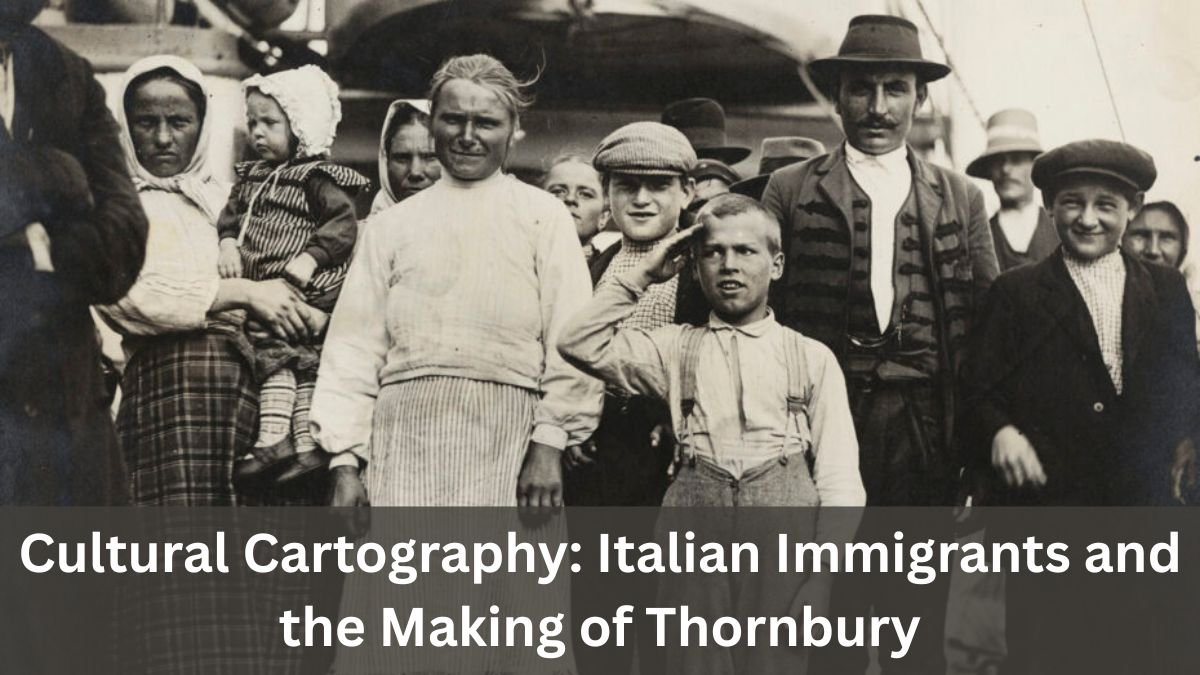Thornbury – a quiet, diverse neighbourhood in Melbourne. While its streets, buildings and communities today reflect a rich cultural heritage, behind this history lies the hard work, struggle and perseverance of a particular community – the Italian migrant community.
In this article, we will map the cultural journey of Italian migrants who shaped the soul of Thornbury. We will learn how their presence not only shaped the geographical identity of the area, but also defined its cultural, social and emotional fabric.
The Beginning – When Italian Eyes Came With New Dreams
After World War II, the challenges of life in Italy forced thousands of people to migrate. Australia had become a symbol of a new beginning – a land where hard work was respected and opportunities abounded.
Thornbury, a neighbourhood in Melbourne, was ideal for migrants with its affordable housing, large plots and railway connectivity. This is where a new story began – an attempt to establish new roots.
Buildings made of spirit, not bricks
The old buildings you see today in Thornbury’s streets are not just architecture, they are spirit. Italian immigrants built the homes with their own hands – with brick, cement and heart.
Their homes had red tile roofs, grapevines climbing the front, and a small vegetable garden in the back. These homes gave birth to Thornbury’s distinct Italian identity.
Food: A bridge to culture, not just taste
Whenever you walk down the streets of Thornbury and smell the aroma of freshly baked bread, pasta or tomato sauce – you’re close to an Italian home.
Italian immigrants not only brought their food with them, but also put it at the heart of Australian society. Today, Thornbury has many local cafes, pizzerias, and delis based on Italian values that keep the food culture alive.
Heritage in Music and Fairs
Italian music, especially folk songs and accordion music, has always been an integral part of Thornbury’s community events. “Festa”, or community celebrations, have become a hallmark of the Italian community.
These events include dance, music, traditional costumes, and family reunions – all of which make Thornbury culturally vibrant.
The Furlan Club: A Living Embodiment of Heritage
The Furlan Club in Thornbury is not just a community center, but a place where Italian heritage lives and breathes. The club has been an identity, a destination, and a cultural hub for immigrants from the Friuli region.
Sports, languages, religious traditions, and mutual aid events have been held here – helping to strengthen the collective identity of the Italian community.
The Role of Elders: Keepers of Memory
The Italian community’s elders are the custodians of living heritage in Thornbury today. They connect new generations to cultural heritage through their stories, experiences, and customs.
They can often be heard at community centers sharing stories of their early struggles of immigration, the difficulties of learning the language, and of their interactions with locals.
Labor and Construction – The Backbone of Thornbury
Many Italian immigrants were artisans, masons, and builders. They not only changed the geographic contours of Thornbury, but also contributed significantly to its economic and social structure.
Their hard work not only empowered their families, but also accelerated local development. These hands are behind many of Thornbury’s schools, churches, and community buildings.
Culture on the Map
If you draw a cultural map of Thornbury, the Italian influence will be deeply evident – street names, local shops, murals, and elderly people standing on the street whose language is still Italian.
This map is not just spatial, but emotional and cultural – showing how a community can reshape an area through its history and traditions.
New generations and cultural continuity
While younger generations live in the digital age, the grandchildren of Italian immigrants proudly recognise their roots. Language classes, Italian dance and cooking classes, and community gatherings continue.
Thornbury today is a unique blend of tradition and modernity – with old stories recorded on smartphones and traditional recipes going viral on social media.
Conclusion
Italian immigrants didn’t just settle Thornbury – they gave it a soul, an identity and a culture. The mark of their struggles, contributions and traditions can still be seen in every corner of the area.
“Cultural Mapping” is not just a history – it is a tribute to the unsung heroes who, with their blood and sweat, made Thornbury a cultural haven.
